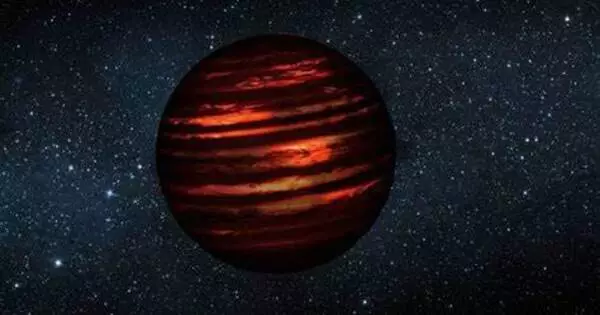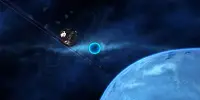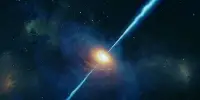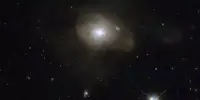Brown dwarfs are objects that exist on the border between stars and planets. They form in the same way that stars do, becoming dense enough to collapse under their own gravity, but they never become dense and hot enough to begin fusing hydrogen and turn into stars. Some brown dwarfs are comparable to giant planets at the low end of the scale, weighing only a few times the mass of Jupiter.
What are the smallest stars?
Astronomers are attempting to identify the smallest object capable of forming in a star-like manner. The new record-holder has been identified by a team using NASA’s James Webb Space Telescope: a tiny, free-floating brown dwarf with only three to four times the mass of Jupiter.
“What are the smallest stars?” is a basic question found in every astronomy textbook. “That’s the question we’re attempting to answer,” said lead author Kevin Luhman of Pennsylvania State University.
This is the first time we’ve detected this molecule in the atmosphere of an object outside our solar system. Models for brown dwarf atmospheres don’t predict its existence. We’re looking at objects with younger ages and lower masses than we ever have before, and we’re seeing something new and unexpected.
Alves de Oliveira
Search Strategy
Luhman and his colleague Catarina Alves de Oliveira chose to study the star cluster IC 348, which is located about 1,000 light-years away in the Perseus star-forming region, to find this new brown dwarf. This cluster is relatively new, having formed only about 5 million years ago. As a result, any brown dwarfs would still be relatively bright in infrared light, glowing from their formation’s heat.
The team began by imaging the cluster’s center with Webb’s NIRCam (Near-Infrared Camera) to identify brown dwarf candidates based on their brightness and colors. They used Webb’s NIRSpec (Near-Infrared Spectrograph) microshutter array to follow up on the most promising targets.
Webb’s infrared sensitivity was crucial, allowing the team to detect fainter objects than ground-based telescopes. In addition, Webb’s sharp vision enabled them to determine which red objects were pinpoint brown dwarfs and which were blobby background galaxies.
This sifting process yielded three intriguing targets weighing three to eight Jupiter masses and ranging in surface temperature from 1,500 to 2,800 degrees Fahrenheit (830 to 1,500 degrees Celsius). According to computer models, the smallest of these weighs only three to four times Jupiter.
Theoretically, explaining how such a small brown dwarf could form is difficult. A dense cloud of gas has enough gravity to collapse and form a star. However, because of its weaker gravity, a small cloud should have a more difficult time collapsing to form a brown dwarf, and this is especially true for brown dwarfs with masses of giant planets.
“It’s pretty easy for current models to make giant planets in a disk around a star,” said Catarina Alves de Oliveira of ESA (European Space Agency), principal investigator on the observing program. “But in this cluster, it would be unlikely this object formed in a disk, instead forming like a star, and three Jupiter masses is 300 times smaller than our Sun. So we have to ask, how does the star formation process operate at such very, very small masses?”
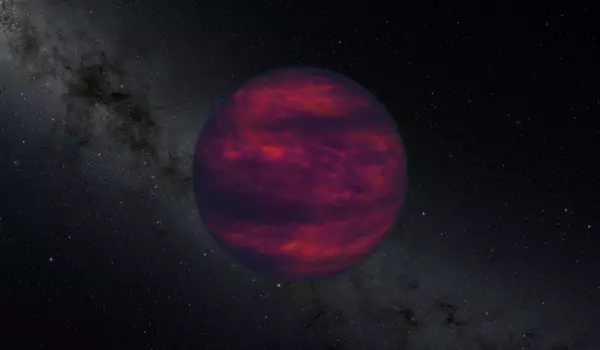
A Mystery Molecule
Tiny brown dwarfs can help astronomers better understand exoplanets by providing clues about the star-formation process. Because the least massive brown dwarfs overlap with the largest exoplanets, they should have some similarities. A free-floating brown dwarf, on the other hand, is easier to study than a giant exoplanet because the latter is hidden within the glare of its host star.
Two of the brown dwarfs discovered in this survey have the spectral signature of an unknown hydrocarbon, or molecule that contains both hydrogen and carbon atoms. The Cassini mission of NASA detected the same infrared signature in the atmospheres of Saturn and its moon Titan. It has also been observed in the interstellar medium, or the gas that exists between stars.
“This is the first time we’ve detected this molecule in the atmosphere of an object outside our solar system,” explained Alves de Oliveira. “Models for brown dwarf atmospheres don’t predict its existence. We’re looking at objects with younger ages and lower masses than we ever have before, and we’re seeing something new and unexpected.”
Brown Dwarf or Rogue Planet?
Because the objects are well within the mass range of giant planets, it begs the question of whether they are brown dwarfs or rogue planets ejected from planetary systems. While the team cannot rule out the possibility of the latter, they believe they are far more likely to be a brown dwarf than an ejected planet.
For two reasons, an ejected giant planet is unlikely. For starters, such planets are uncommon in comparison to planets with smaller masses. Second, most stars have low masses, and giant planets are extremely rare among them. As a result, most of the stars in IC 348 (which are low-mass stars) are unlikely to be capable of producing such massive planets. In addition, since the cluster is only 5 million years old, there probably hasn’t been enough time for giant planets to form and then be ejected from their systems.
The discovery of more such objects will aid in determining their status. According to theories, rogue planets are more likely to be discovered on the outskirts of a star cluster, so broadening the search area may help identify them if they exist within IC 348.
Longer surveys that can detect fainter, smaller objects may be included in future work. The team’s brief survey was expected to detect objects as small as twice the mass of Jupiter. Longer surveys could easily reach the Jupiter mass limit.
